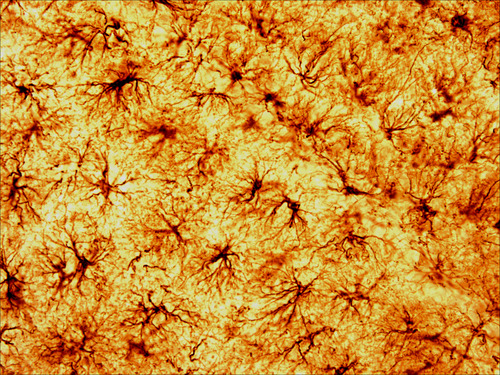|
Art of Science 2013 Online Gallery
«Prev |
Thumbnails |
Next »
|
 Starry, starry night
Barry Jacobs (faculty) and Casimir A. Fornal (research scholar)
Department of Psychology and Princeton Neuroscience Institute
The Dutch master Vincent van Gogh painted many of his greatest works while in a state of clinical depression. One of his most famous paintings, from 1889, is "The Starry Night." The title for this photo, "Starry, Starry Night," is the title of a 1970s hit song about van Gogh by Don McLean. This photo micrograph of the mouse hippocampus shows a cell type named astrocyte ("astro" a prefix from the Greek meaning star). Astrocytes are one type of glial cells, the most numerous type of cells found in the brain. Glia outnumber neurons (the information-carrying cells in the brain) ten to one, and provide critical support allowing the brain to smoothly carry out its various functions. The hippocampus is one of the brain structures known to be dysfunctional in human depression. Pathology of van Gogh's astrocytes may have contributed to his mental state that led, ultimately, to his suicide.
|
|